Creme Brulee Dessert Recipe
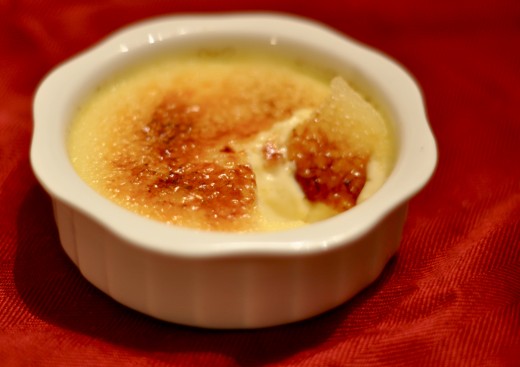
Home Cooking: La Creme de La Creme
You know that old saying that the way to a man’s heart is through his stomach? Well, let me tell you—it works just as well for women. By now you have probably realized that Valentine’s Day is right around the corner—really, how could you not with the explosion of pink and red in every grocery and department store? For some of us, V-Day is not a big deal. For others, it’s a horrendous day created by evil Greeting Card companies.
Then there are those that worry and stress about what to get their mother/father/sister/brother/boyfriend/girlfriend/cat, wanting it to be that elusive combination of perfect and unforgettable. Personally, I’ve always been more of the type to make someone a card, or just buy them some cheap candy hearts. More and more, though, especially as I get older, I find myself appreciating gifts that involve a combination of time, effort and flavor.
I’m sure that I’m not alone on this. So, if you must celebrate, I say to everyone out there—why not cook a scrumptious dish for someone you care about this Valentine’s Day? Besides being more cost-efficient, it feels pretty good to make something whole from little parts, to watch a loved one eat what you created with your own hands. If worst comes to worst, if it turns out horrible (oh, the horror!), at least you’ll both get a nice laugh out of it.
A Classic for Someone Special this Valentine’s Day:
Crème Brûlée (Burnt Cream):
One of my top picks, alongside pate a choux or profiteroles, this creamy dessert with a caramelized sugar topping requires few ingredients, is fun to make (blow-torch, anyone?) and an out-of-body experience to eat. Keep in mind that part of the magic of Crème Brûlée comes from the crispiness of the burnt top contrasted with the creaminess of the custard.
The Custard Rivalries:
Not one, but three countries claim that this dessert was their invention—England, Spain, and of course, France. While food historians have been unable to determine the exact date and place of origination, what is known is that custards were popular in the Middle Ages throughout all of Europe. Well, maybe that takes care of the custard question, but then you have to wonder—who came up with the brilliant idea of caramelizing the sugar on top?
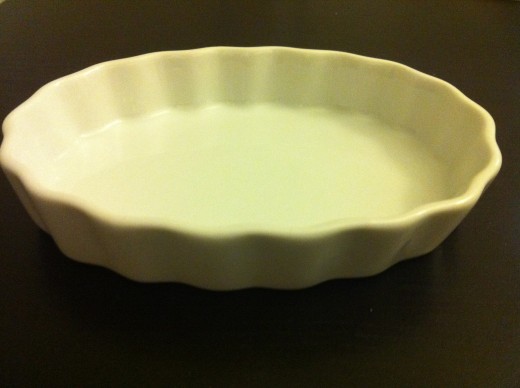
In England the tale goes that sometime in the 1860’s a young lad at Trinity College in Cambridge offered the kitchen a creamy and unsweetened custard with a caramelized topping. Initially, the staff scoffed at his creation, but when he became a fellow at the University, the chefs took notice. Legend has it that they replicated his savory dessert and christened it “Trinity Burnt Cream.” While this story may or may not be true, the kitchen at Trinity is well known for their delectable variation—unsweetened and with a thicker and crustier topping.
In Spain, locals claim that their crema catalana is the real predecessor of crème brûlée and was invented sometime early in the 18th century (crème brûlée is thought to have come about in the late 18th century). There are some big differences, however. Firstly, crema catalana is not baked in a bain-marie (in fact, it is not baked at all) and secondly, it often includes cornstarch and/or cinnamon. As always, the Spanish manage to add a bit of flair to their cuisine...
The French, of course, insist that crème brûlée is originally their pièce de résistance, starting back in the day when every rural household in dairy country had a milk-cow. That milk was thick, rich and set solidly without the addition of egg yolk. A bit of sugar was sprinkled on top, heated, and voila— crème brûlée, or “burnt cream” was born. Nowadays, the dessert is usually served cold and cooked in a shallow pan of water. This bain-marie, or water bath, is a technique used when baking custards to prevent cracking or curdling in a hot oven. The boiling water that is poured halfway up the side of the ramekin (s) protects the sensitive contents from the heat.
Before the invention of blow-torches and eye-level broilers, the French used salamanders (a red-hot iron) heated on the stove to melt and caramelize the sugar.
Simple and Classic Crème Brûlée Recipe:
Ingredients:
-1 cup heavy cream
-Short length of vanilla pod (beans), or 1-2 teaspoons of vanilla extract
-1 tablespoon white sugar
-1 tablespoon brown sugar
-3 egg yolks
Cooking Steps:
1. Preheat the oven to 325 F.
2. Warm the cream, along with the pod (or extract), in a saucepan on low heat, until it almost comes to a boil.
3. Stir in the sugar until it dissolves, then whisk in the egg yolks
5. Carefully remove any froth/foam with a strainer and remove the vanilla pod (if you used one).
7. Pour the custard into 4 individual ramekins (you can also use a terra cotta glazed dish)
8. Place the ramekins in a roasting pan or in a baking dish.
9. Set the pan with the ramekins in it on the oven shelf, then pour very hot water into the pan, just enough to come halfway up the outside of the ramekins.
10. Bake for 20-30 minutes, until the custards are set but not hard. Check this by gently shaking the dish to see if the custard jiggles slightly (this should resemble the jiggle of Jell-O, not liquid)
11. Remove custards from the oven and let them cool (still inside the pan with water) for 15 minutes.
12. Place the ramekins in the fridge to chill for 1-3 hours.
13. Just before serving, sprinkle the tops of the custard with a thin, even layer of brown sugar.
14. To caramelize the sugar, use your oven’s broiler setting to get a nice, brittle top layer. Broil for 20 to 30 seconds within at least an inch of the heat or flame. Or, if you have a blow-torch, that is a fun and flashy way to do it!
15. Serve immediately.
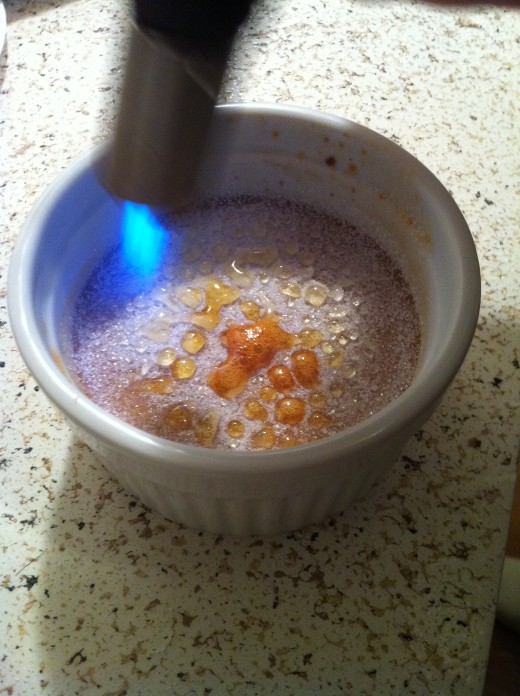
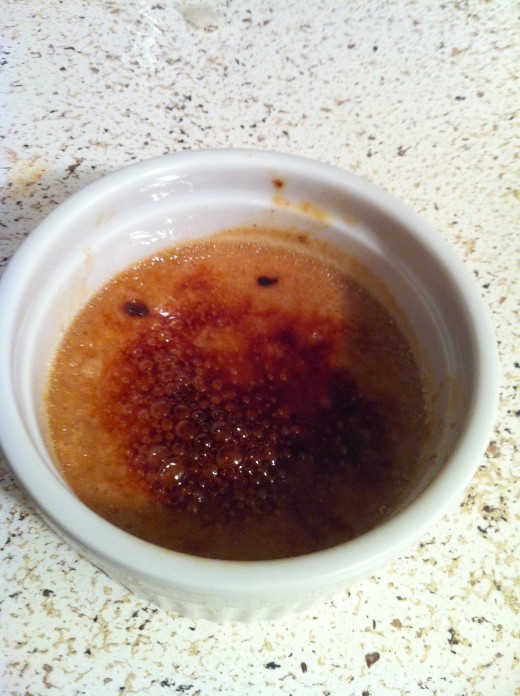
Simple Crème Brûlée: Instructional Video
I have included a video for further assistance! Note:
* I do not use orange zest in my Brûlée--but feel free!
*Also, I don't find it necessary to leave the brulee's in the fridge for so long--you run the risk of getting creme brulee ice cream!
Popular Variations on Custard Flavoring:
*Depending on who you are making this for, you can opt to flavor the custard.
1. Cocoa bean or coconut extract
2. Zest of a citrus fruit, such as lemon, orange or pomelo. This works best with sweeter custard.
3. Fresh fruit, such as blueberries, strawberries or even pears make a delectable presentation.
4. Liqueur flavorings, such as cognac.
5. Coffee.
6. Spices such as cinnamon, nutmeg and cardamom.
7. Bittersweet chocolate, added to the custard before the sugar is sprinkled on top. This is a superb way to experiment with savory and robust flavors of organic and/or fair trade chocolate!
Special thanks to fellow hubber,jenubouka, for inspiring me to try a chocolate creme brulee! You can read her delish hub below...
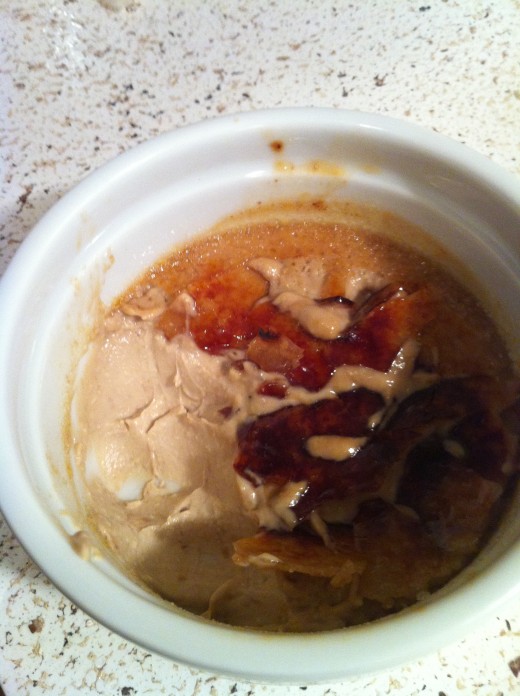
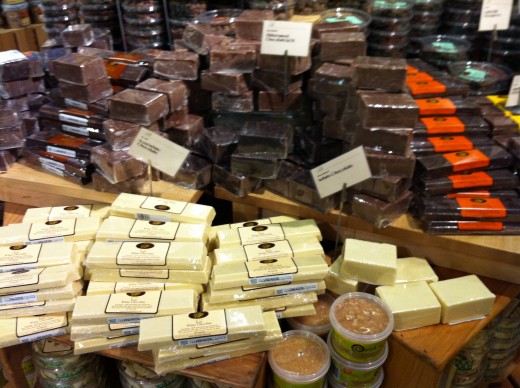
Need Chocolate Ideas?
- Organic Chocolate VS. Regular Chocolate
Organic Chocolate is more expensive than regular, Big Name chocolate. It is also healthier, better for the environment, and tastes blissfully delicious. Now that I know what organic really means, I can never go back.









